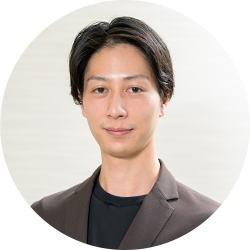Meet our customer hero
Accelerating the digitalization of a general trading company
Despite the recent boost in worldwide digitalization, cross-border trade in goods remains one of the last industries that’s struggling to make the transition. Lack of global standards, various systems and languages, and authorities that still rely on paper are just some of the stumbling blocks. ITOCHU, one of Japan’s largest sogo shosha (general trading companies,) has been leading its industry since its founding in 1858. So it’s no surprise that it’s prioritizing the newest in digitalization and automation technology. And this technology is touching everything—data entry, compliance checking, shipping, vendor management, demand prediction—even customer touchpoints! These massive changes required a captain that could effectively steer such a strategic transformation without creating too many waves.
Yet many of the same issues plaguing the international trading industry also affected ITOCHU. Each department handled different products and had different trading partners, and as a result, utilized its own systems and tools. In addition, old business processes remained in place, and trade management was conducted using complex and voluminous control ledgers.
A bridge between IT and the business
In addition to visualizing process architecture across the company, the effort needed to fold in ITOCHU’s powerful Robotic Process Automation (RPA) tools. At ITOCHU, RPA automates repetitive, high-volume, rules-based tasks—for reduced costs, increased efficiency and improved accuracy. The company had already saved 40,000+ hours of work using these tools. But while RPAs are automated to follow current work processes, there was a risk that some of the manual work originally done might go forgotten or be lost.
ITOCHU needed a tool that could bring all the different process visualizations and automations under one roof and highlight what could be further digitalized. ARIS was chosen for its versatility and ability to link all manner of different systems and formats. Flow templates enabled the team to quickly add to the business flow without starting from scratch—and easily link to other processes.
The power of visualization
The team got to work, capturing the as-is state, and really drilling down on the details in each department. In just over two months, they had already visualized 10-15% of processes—including the entire basic trading process. At this speed, they’re well on their way to meeting their goal of visualizing 50-60 processes per year. And this transparency is paying off. Now anyone within the company can easily access the company's process architecture and understand how their department is connected to the entire organization. As a result, the efficiency of visualization work for existing operations, which is a major premise for improving operations, has improved. This visibility ensures that the entire IT department and all employees who are motivated to work on business improvement can actually see and understand how the company's work is being done, and can make use of that knowledge to improve their own department. Most importantly, ARIS is providing crucial strategic insights, serving as a stepping stone for business improvement, including business process improvement, development of new systems and improvement of existing systems.
Full steam ahead for change
And that’s not all—ITOCHU has been keeping with the times for over 160 years, so naturally it’s prioritizing sustainability goals. In ARIS it’s easy to see how efficiency gains due to process visualization will result in improved operations and decreased energy use. Once extended to manufacturing, this will also mean reduced CO2 emissions—which the company’s new centralized process visualization will enable the tracking of. ITOCHU is using ARIS to transform its business inside and out. And it’s just getting started.





